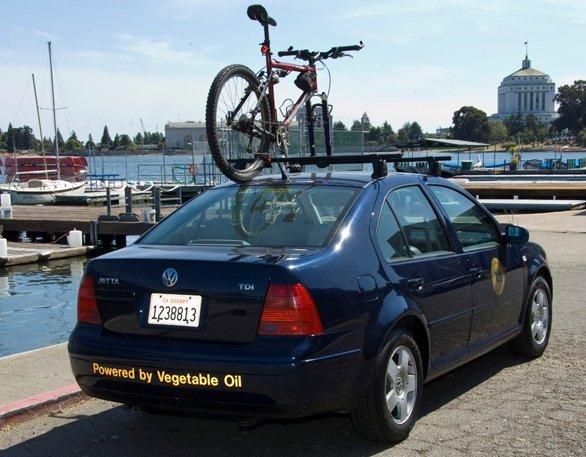Alameda County Greening Fleets
County: Alameda
Population: 1,574,857
Summary
Since joining the Cool Counties program in 2002, Alameda County has integrated alternative- fuel and fuel-efficient vehicles into its fleet. The County added over 130 hybrid vehicles and explored a variety of alternative technologies, including bio-diesel, waste vegetable oil, compressed natural gas, and electric vehicles. The County is also developing a Consolidated Vehicle Use policy to provide detailed guidance for use of green vehicles, consistent with its Climate Action Plan.
Program Highlights
- The county’s actions include exploring multiple strategies and technologies.
- Fleet includes over 130 hybrid vehicles and four waste vegetable oil vehicles.
- Approaching goal of 80 charging stations at county facilities for electric vehicles.
Lessons Learned
- Developing program includes a bit of “trial and error” in exploring different technologies to see which are a good fit.
- An important part of developing a program to purchase alternative-fuel vehicles includes promoting using alternative-fuel vehicles.
Resources to Learn More
- Draft Consolidated Vehicle Use Policy (see PDF at right for download)
- Transportation Services Major Accomplishments for FY 2009-2010 (see PDF at right for download)
- Alameda County Sustainable Transportation Web page
- Alameda County Climate Action Plan
- Alameda County Strategic Vision
The Rest of the Story…
Alameda County’s initial green fleet efforts were guided by several broad policy initiatives. Alameda County joined the Cool Counties program in 2002 and developed a countywide Strategic Vision in 2007. In May of 2010, the county adopted its Climate Action Plan, which includes general “green fleet” guidance. The county’s Draft Consolidated Vehicle Use Policy parallels the policies in the Climate Action Plan, including detailed guidance for purchasing alternative-fuel and fuel-efficient vehicles.
The county has explored a variety of different alternative-fuel technologies, including compressed natural gas, bio-diesel, electric vehicles, and hybrids. Its fleet includes over 130 hybrid electric vehicles and four cars with engines converted to run on waste vegetable oil. The county has fueling stations for bio-diesel and regular gasoline and is nearing its goal of 80 charging stations at county facilities for electric vehicles.
Alameda County looks at the costs and benefits associated with the entire life cycle of a vehicle to evaluate potential vehicle purchases. This approach often finds that the greater fuel efficiency of alternative-fuel vehicles, such as hybrids, outweighs the higher initial purchase price. It also allows the benefits of reduced emissions to be included in the analysis.
The county is also working to reduce demand for its alternative-fueled vehicles by providing alternatives to driving for many of its employees. It offers two shuttle buses that run between its main office campuses in Oakland and its offices in San Leandro. The shuttles are open to the public, connect with local transit, and replace two transit lines that had been canceled due to funding cuts.
Compiled May 2010
This case story was prepared with generous support from AAA Northern California, Nevada & Utah.


